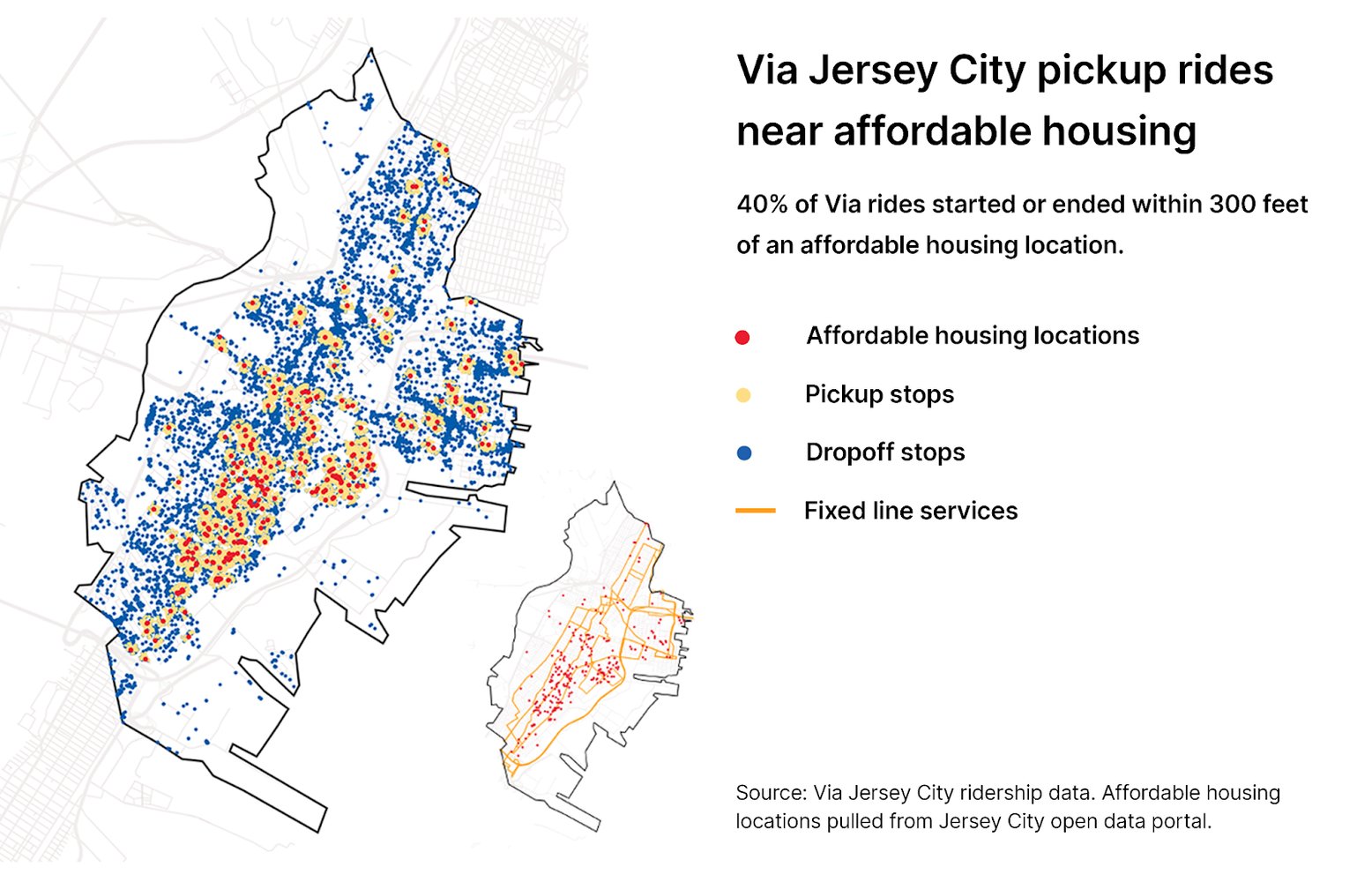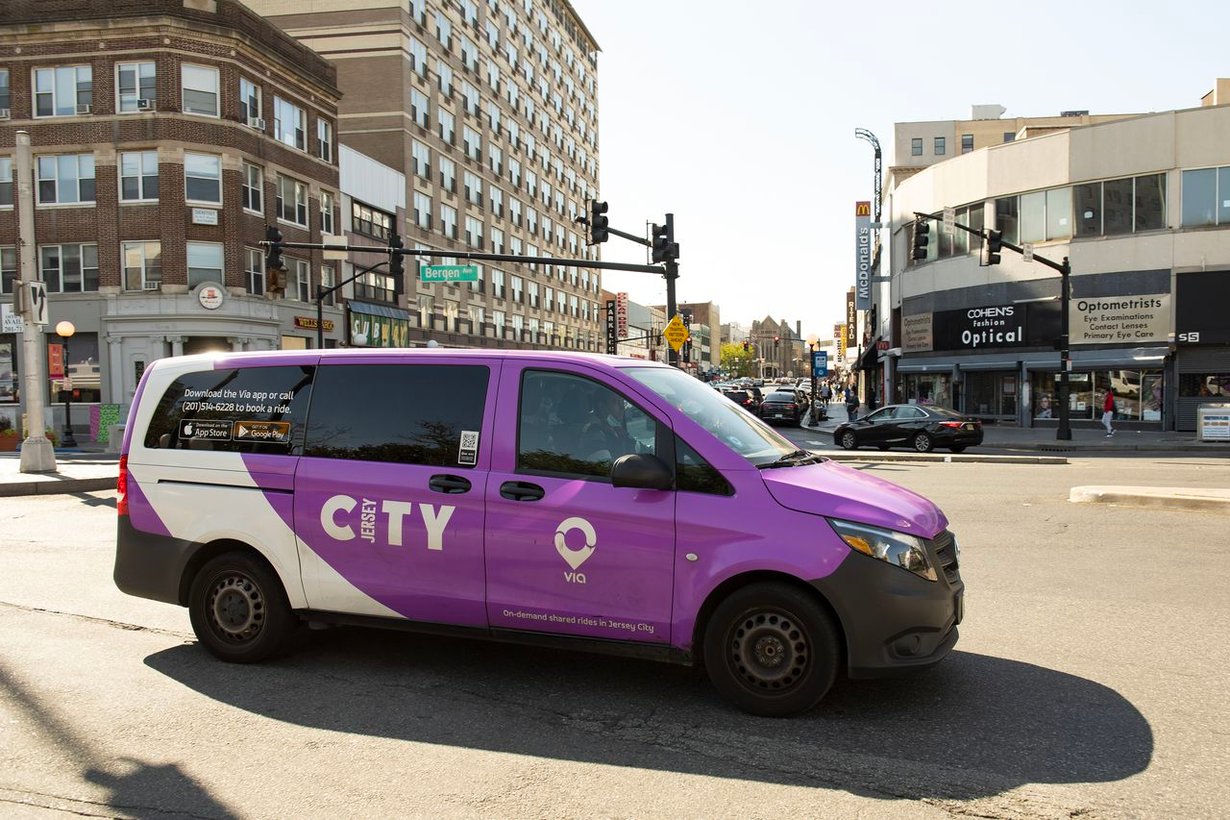A Jersey City Via van on Journal Square. Credit: Reena Rose Sibayan | The Jersey Journal
When cities and governments prioritize vulnerable residents’ access to affordable housing, they often leave out a key component: ensuring reliable transit in and around their communities. If affordable housing is isolated from jobs, education, and healthcare resources, it ceases to function as a springboard to opportunity for its residents, who are less likely to own private cars and are more dependent on public transit.
Jersey City, New Jersey, a city where 15% of 262k residents live in poverty, offers a model for combining reliable transit with affordable housing to truly serve residents in need. The city strives to make sure that these 42k most vulnerable residents not only have an affordable and safe place to live, but can also move affordably with public transit options, including Via's microtransit solution. Get up to speed on Via's microtransit offering below!
In October 2020, Mayor Steven Fulop announced an ordinance requiring residential development projects to include 20% affordable housing units. Only months before, the city had deployed the state’s first on-demand, dynamically routed microtransit service in partnership with TransitTech company Via, so that residents living in transit deserts where existing fixed routes are not covered can also use public transportation.

Credit: Manyu Jiang
Together, affordable transit and affordable housing proved a powerful combination. After two years of service, data also shows that 40% of all Via Jersey City rides started or ended within 300 feet of an affordable housing location – suggesting that low-income and diverse communities have benefited greatly from the innovative microtransit program. Rider survey results support that conclusion as well:
- 40% of riders fall into the annual household income bracket of $50k or under.
- 78% of riders identify as non-white.
- 70% of riders don’t have a personal car that they can use to commute or run errands.
- Over 92% of riders see “affordability” and “convenience” as the main perks of this service.

Sara, a Via rider and Jersey City resident whose annual income is under $35k, revealed that she used to spend upwards of $275 per week on ride-hail services. At nearly 40% of her total income, these commuting costs were unsustainable. “Via has changed it all,” she says now. “Attempting to use the light rail was a challenge, as we walked 3 miles a day, doubling our commute time. Spending only $10 a week each to commute with Via has been life-changing. I had been looking to buy a car for a while, but now I see no need.”
Improved transit can help unlock more employment opportunities and even boost the local economy. According to the U.S. Department of Housing and Urban Development, American households living in auto-dependent areas spend up to 25% of their income on transportation, but this number drops to 9% in communities with accessible mobility options. Saved costs from affordable housing and decreased transportation allow these families to spend on essential services such as groceries, healthcare and education, prevent pockets of poverty, and further boost the prosperity of their communities.

Data Journalist




